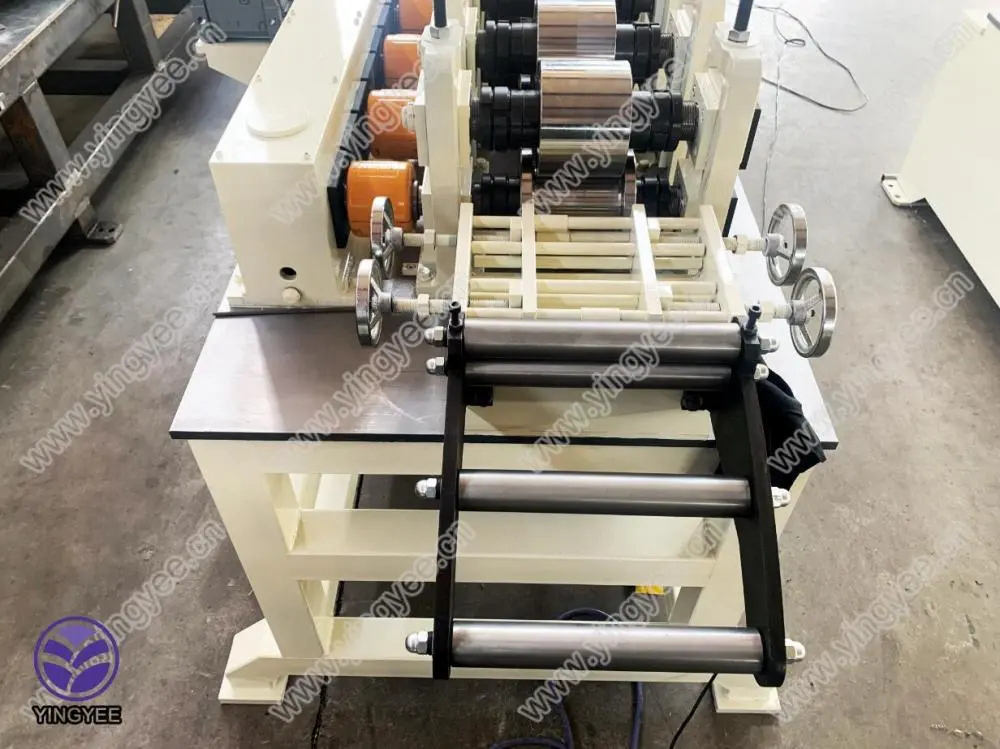
The Impact of Stud and Track Making Machines on Modern Manufacturing
In the rapidly evolving world of manufacturing, the introduction of automation and specialized machinery has revolutionized production processes across various sectors. Among these innovations, the stud and track making machine stands out as a key contributor to efficiency and precision in the fabrication of critical components used in construction, automotive, and industrial applications. This article will delve into the significance of these machines, their operational principles, and the benefits they offer to manufacturers.
Understanding Stud and Track Making Machines
Stud and track making machines are specialized pieces of equipment designed to manufacture metal studs and tracks, which are essential elements in the construction industry, particularly for framing systems in residential and commercial buildings. These machines automate the process of cutting, bending, and assembling metal strips into finished stud and track products, streamlining what was once a labor-intensive and time-consuming task.
Typically, the machines process galvanized steel, which is commonly used for its durability and resistance to corrosion. They can swiftly produce various sizes and shapes of studs and tracks tailored to specific construction requirements. The advanced design of these machines allows for high-speed operation, with some models capable of producing thousands of units in a single shift.
The Operational Principle
The operational principle of stud and track making machines involves several key processes. Initially, metal coils are fed into the machine, where they are straightened and cut to the desired length. Following this, the machine employs a series of rollers to form the metal into the specific profiles required for studs and tracks. This forming process includes bending and crimping to ensure that the final product meets the necessary structural standards.
Modern stud and track making machines are equipped with computerized controls that enable precise adjustments to be made easily
. This level of automation not only enhances accuracy but also allows manufacturers to quickly switch between different product specifications without the need for extensive retooling. As a result, production can be scaled up or down with greater flexibility in response to market demands.
Benefits of Using Stud and Track Making Machines
1. Increased Efficiency One of the most significant advantages of stud and track making machines is their ability to produce large volumes of products in a shorter timeframe compared to traditional methods. This efficiency translates into lower labor costs and higher output rates.
2. Enhanced Precision Automated machinery reduces the risk of human error, ensuring that each stud and track produced meets exact dimensions and specifications. This consistency is crucial in construction, where structural integrity is paramount.
3. Cost-Effectiveness Though the initial investment in a stud and track making machine may be substantial, the long-term savings in labor, materials, and production time make it a cost-effective solution for manufacturers. The ability to produce high-quality products at scale also increases profitability.
4. Flexibility and Customization Many modern machines allow for quick adjustments, enabling manufacturers to create customized products based on client specifications. This adaptability is a significant advantage in today’s market, where customers increasingly demand tailored solutions.
5. Reduced Waste Efficient processing and precision cutting minimize material waste, contributing to more sustainable manufacturing practices. Manufacturers are increasingly focusing on environmentally friendly production processes, and stud and track making machines play a role in reducing the carbon footprint of the construction industry.
Conclusion
The advent of stud and track making machines marks a pivotal advancement in modern manufacturing, particularly within the construction sector. By enhancing efficiency, precision, and flexibility, these machines not only streamline production processes but also play a vital role in meeting the demanding needs of the market. As technology continues to advance, the capabilities of these machines are expected to evolve, further solidifying their importance in the future of manufacturing. Ultimately, the stud and track making machine is a testament to how innovation can drive progress in industries that form the backbone of our infrastructure.